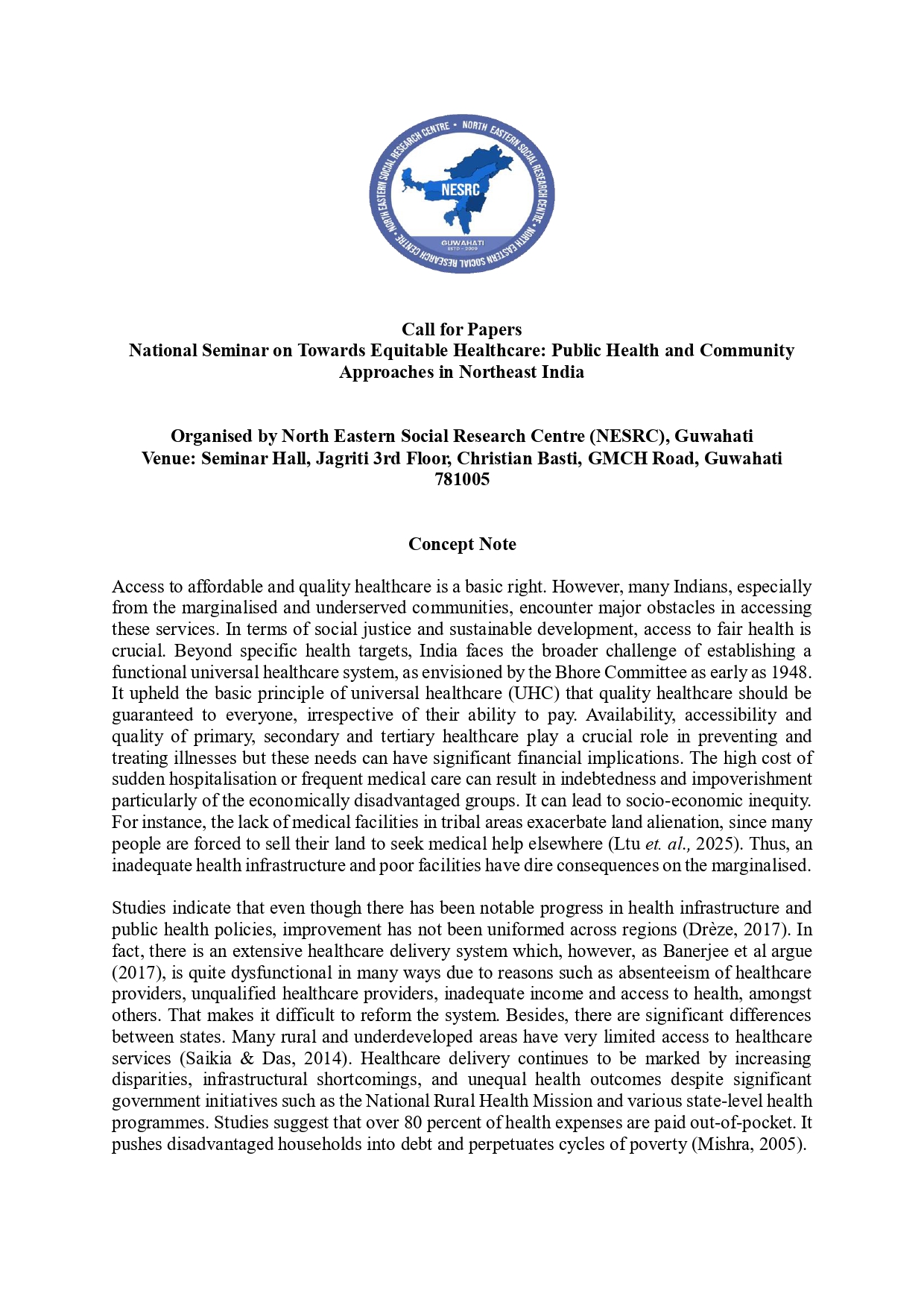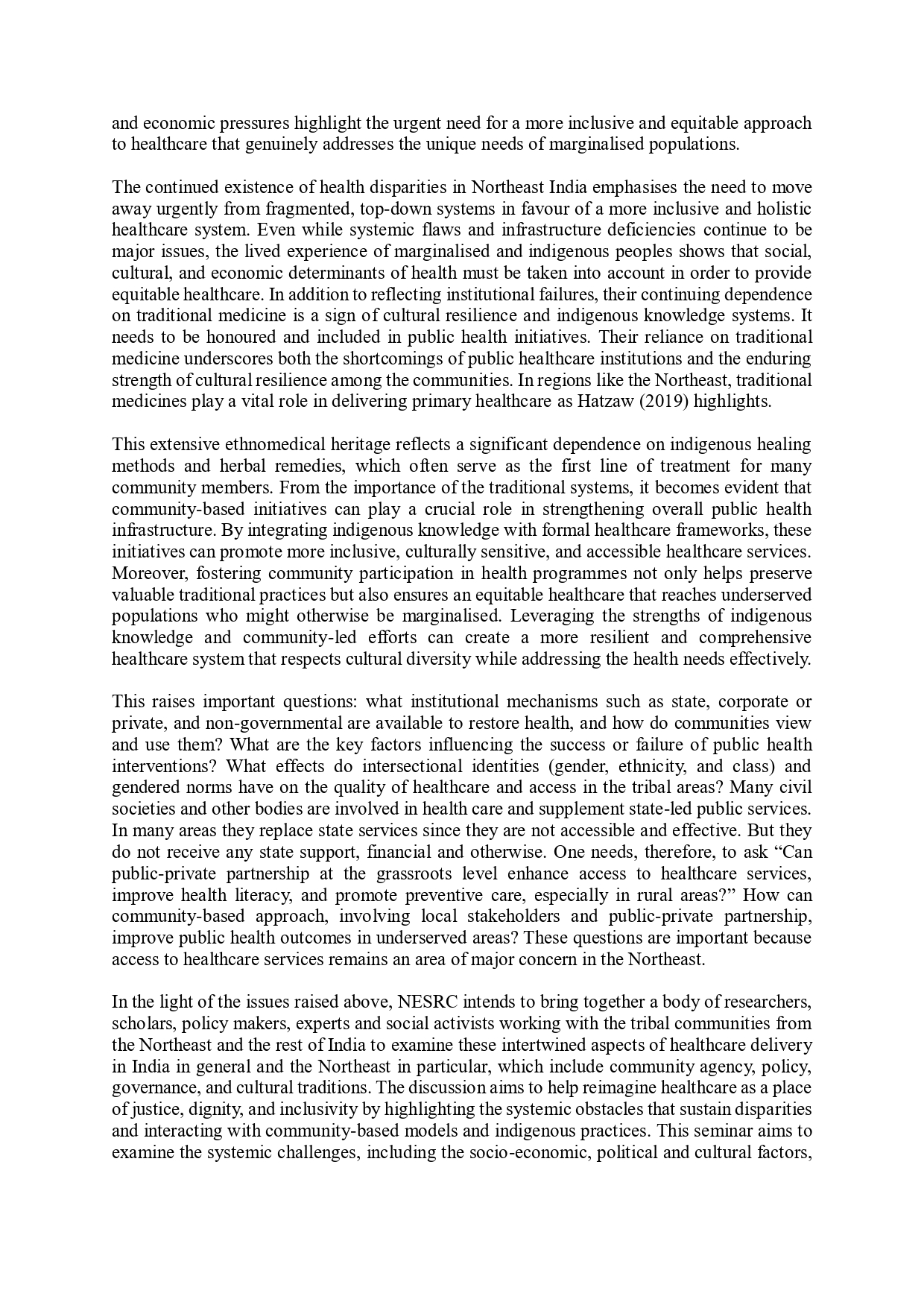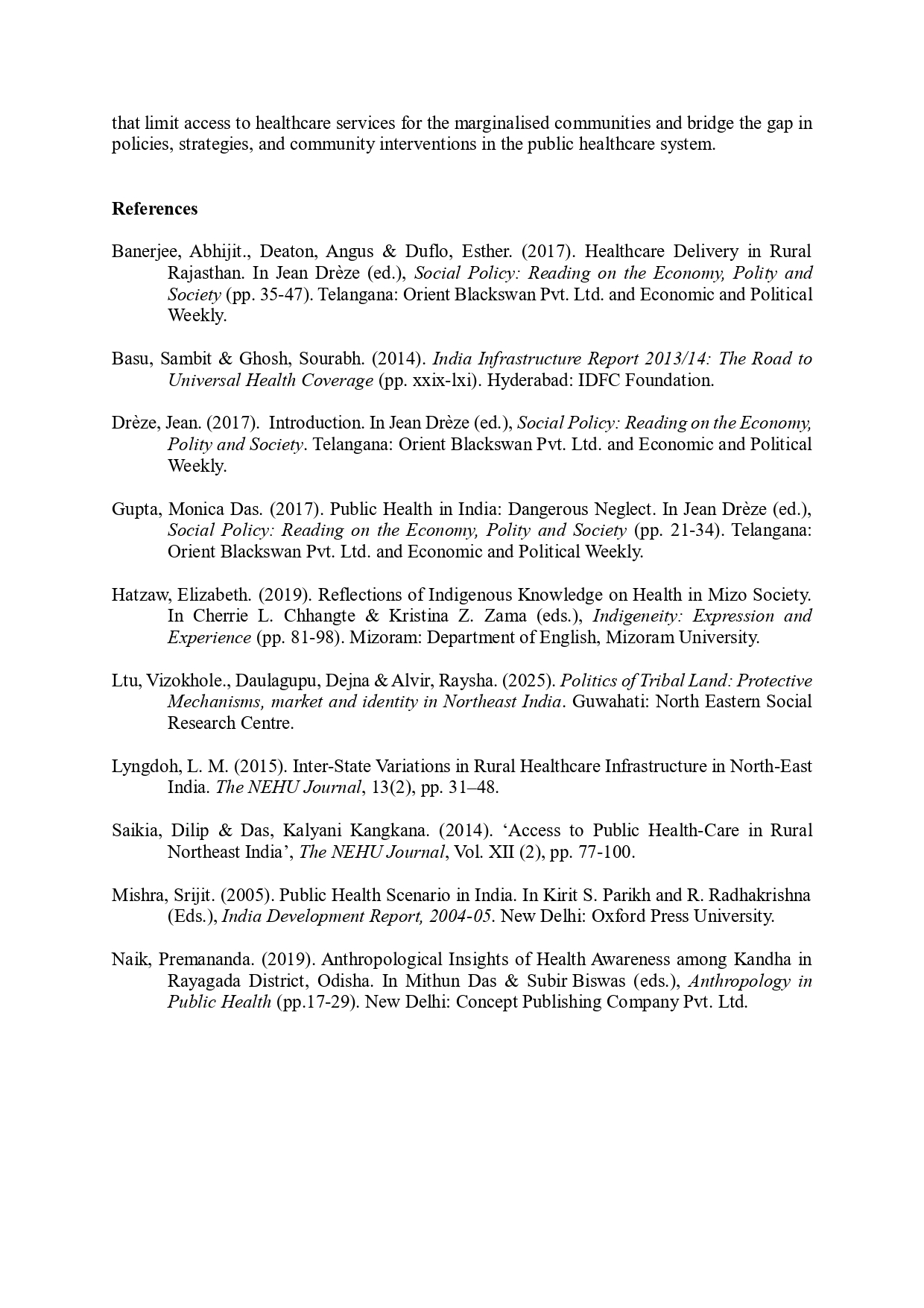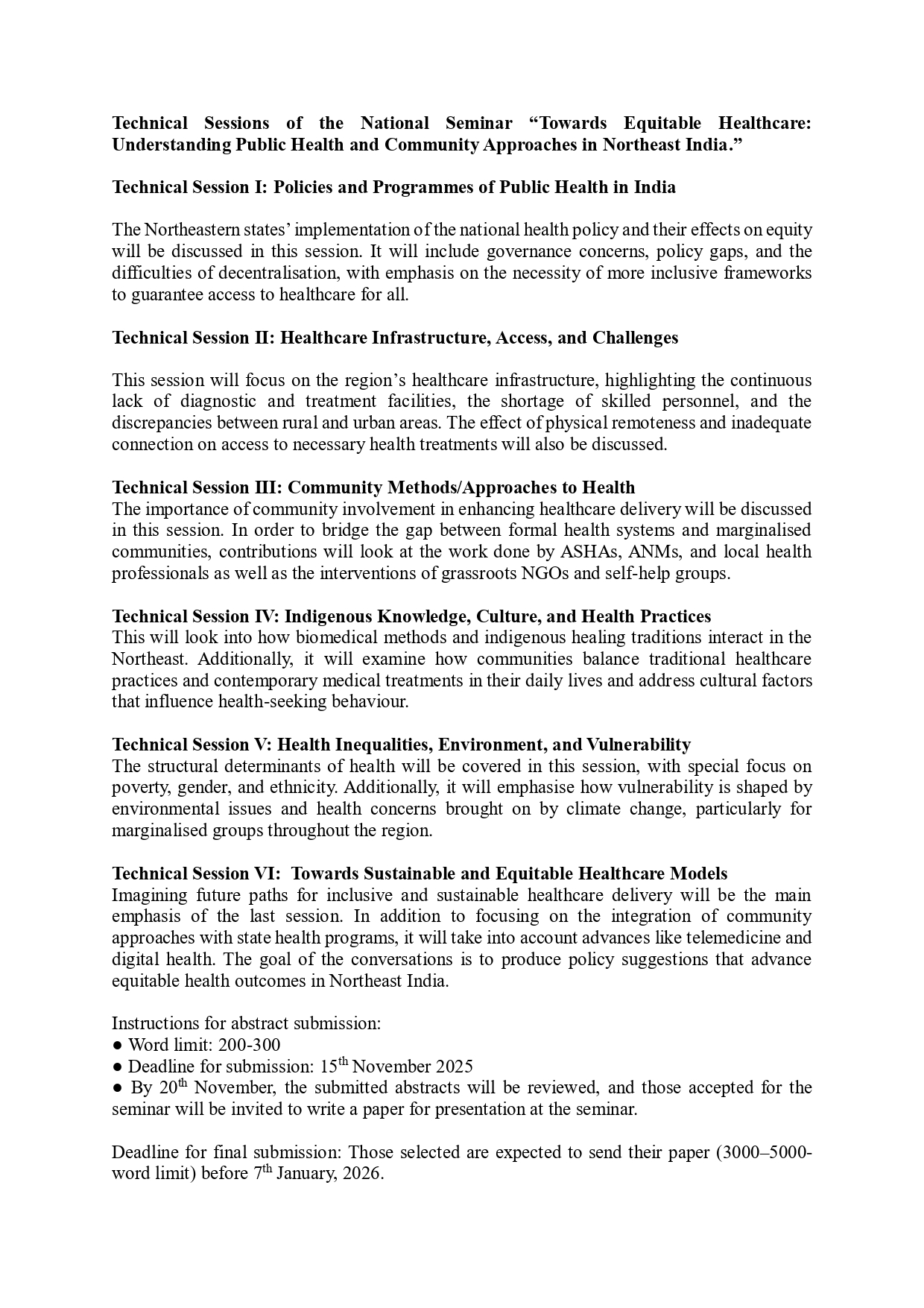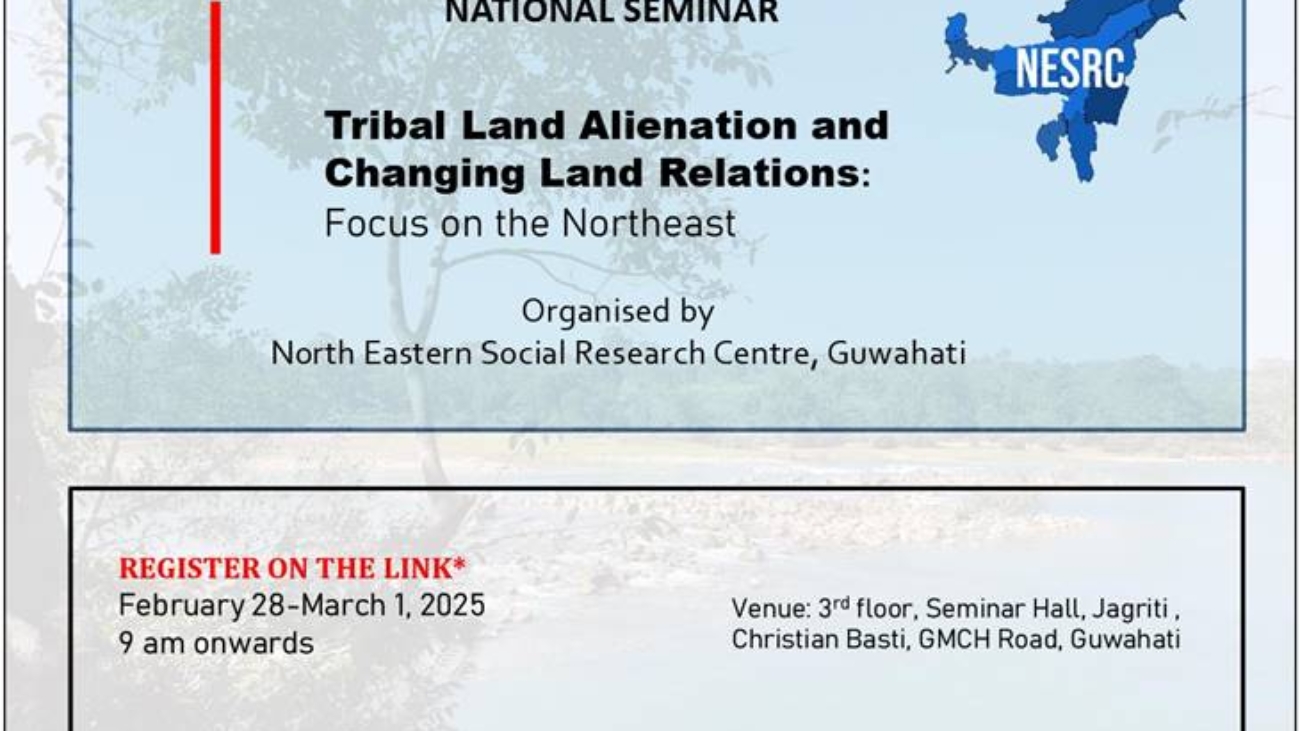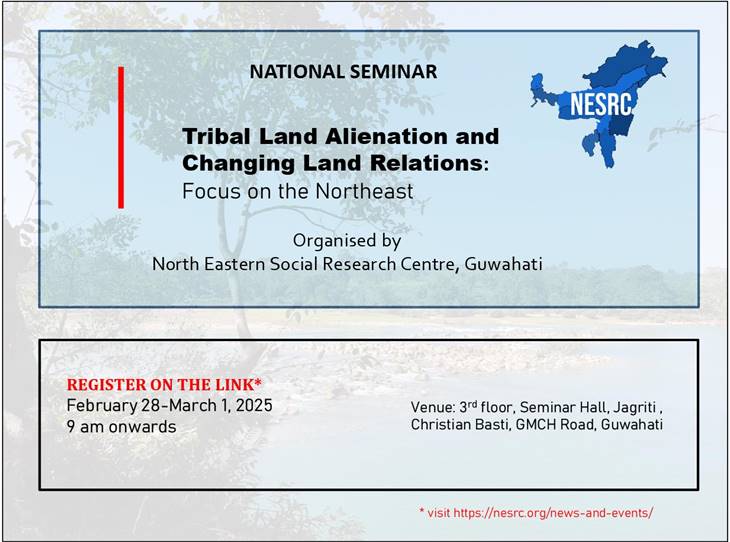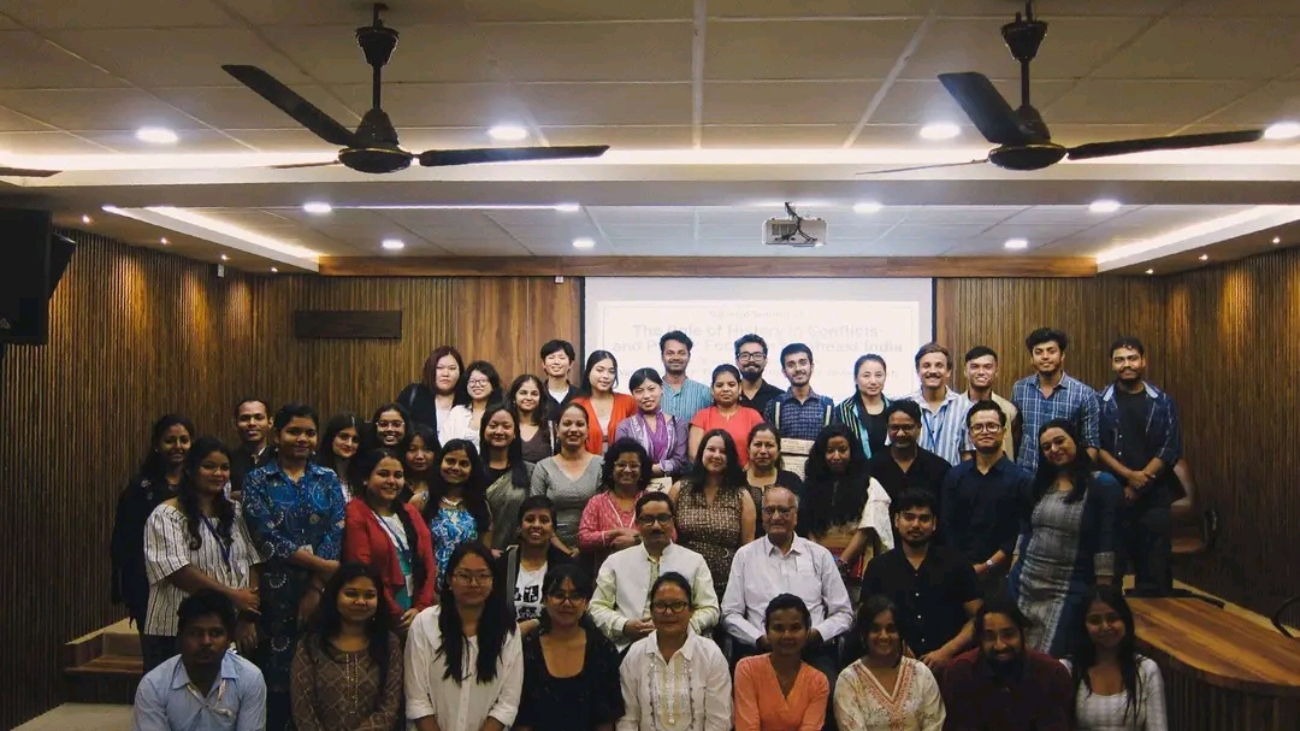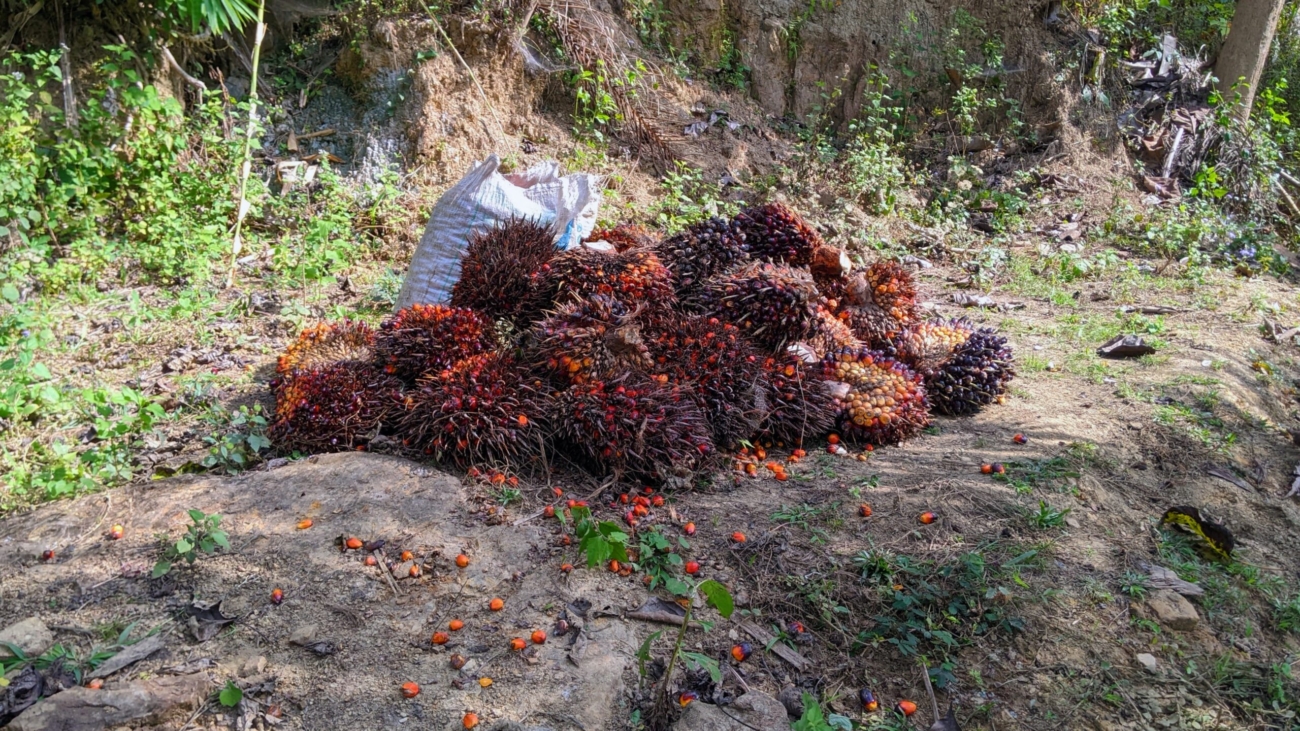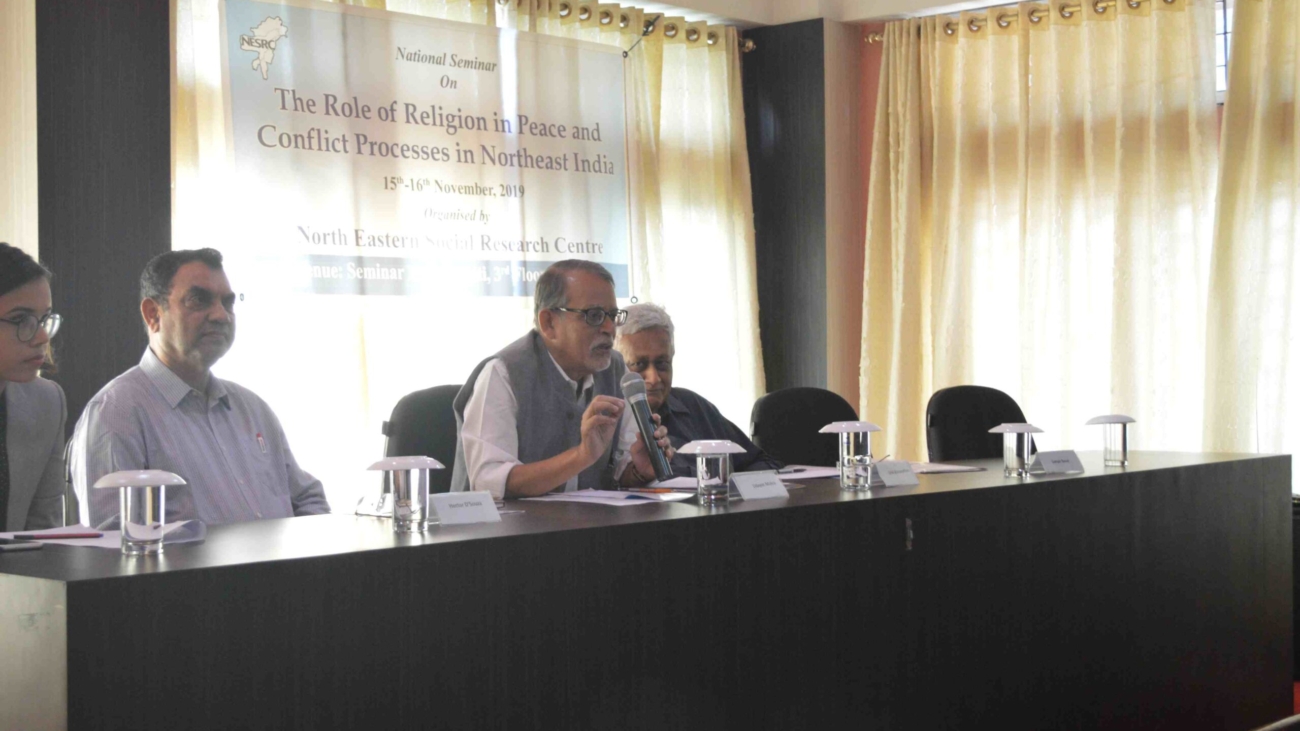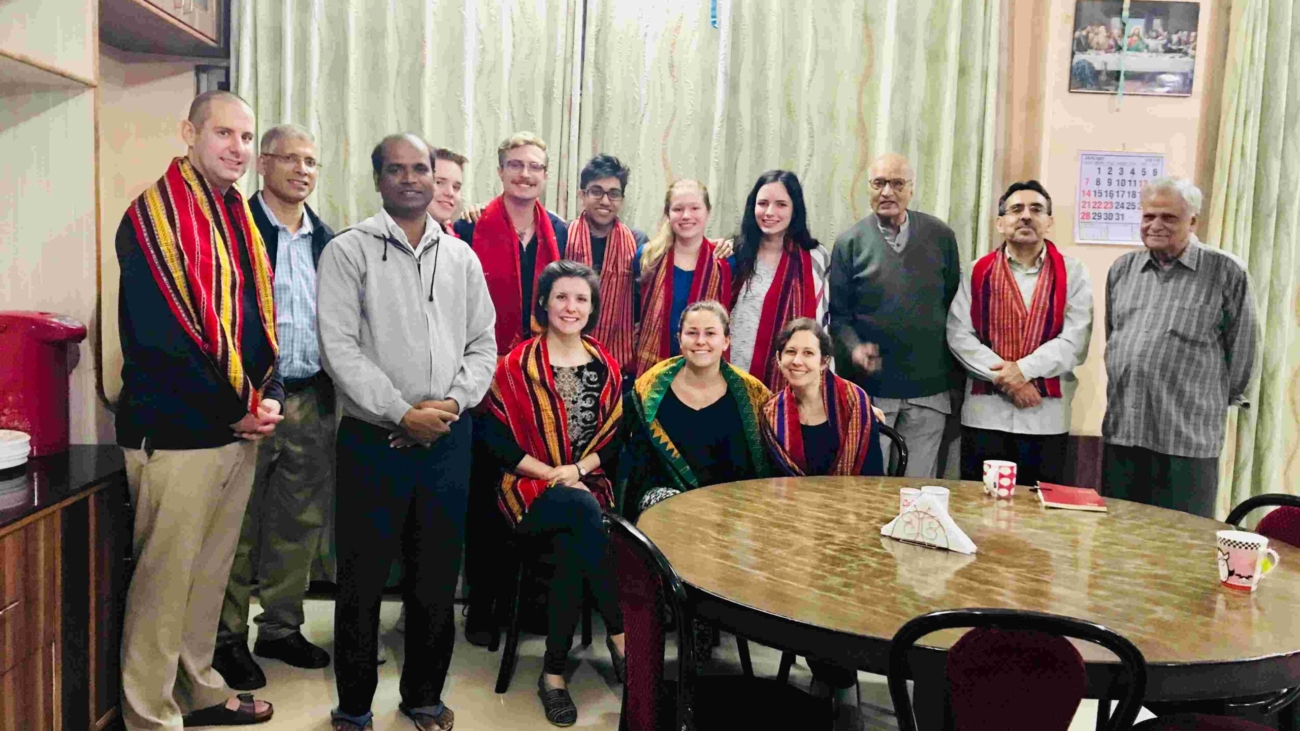Seminar on The Socio-Economic Impacts of Oil Palm Plantation in Northeast India
Regional Seminar on the Socio-Economic Impacts of Commercial Oil Palm Plantations in Northeast India
Organized by
North Eastern Social Research Centre, (NESRC) September 6-7, 2024 Concept Note
Northeast India in the Eastern Himalayas is home to many species of flora and fauna. The region’s diverse ecosystems, including forests, grasslands, wetlands, and rivers support a wide variety of plant and animal species. Together with western Myanmar it is also one of India’s two mega-biodiversity zones, the other being the West Coast. Recently, with an aim to reduce the country’s reliance on imported edible oils and promote domestic oil production, the National Mission on Edible Oils (NMEO), established by the Indian government in 2021, has expanded oil palm plantations across different regions of the country. Emphasis in this program financed by the Federal Government, is placed on Northeast India and Andaman and Nicobar Islands. In a quiet experiment it has been grown on a few hectares in most states of the region with greater priority accorded to it in Mizoram where it began as early as 2005. It is grown today on 61,000 hectares(150,000 acres) in the region, 67 percent of it in Mizoram. A quota has today been fixed for each state, for example 13,200 hectares in Nagaland whose territory is 1,600,579 hectares. .
However, opinion is divided on the project both at the theoretical and practical levels. At the theoretical level, the post-development school views the mainstream development paradigm as a flawed concept that prioritizes economic growth over social justice, cultural diversity, and ecological sustainability and perpetuates social inequalities and environmental degradation. They apply this theory also to the oil palm plantation. On the other side there are those (e.g. Sen 1999) who argue that development is empowerment and includes social, cultural, and economic advancement in all aspects.If provided equal opportunities it should enhance environmental, economic, social, and cultural progress. To achieve it the state should take into account the basic questions such as the purpose of development, its beneficiaries, and its implementation. In contrast, field based studies give instances of people’s displacement by mega projects like dams, infrastructure, and industries that benefit some segments of society at the cost of indigenous people who never gain from this form of ‘development’ but take land away from them and impoverish them. It disturbs the local ecosystem and socio-economic structures (Singh, 2020).
Because of its shift towards commercialized agriculture the introduction of oil palm plantations in Northeast India has sparked the above discussion and a myriad debates mainly around environmental concerns, sustainability, impacts on social relations, land use and management. This debate emerged from the experience of Southeast Asian countries that have been having oil palm plantations for several decades. Studies in these countries have raised concerns in the recent past on possible threats from oil palm to biodiversity, land relations, disruption of community social and customary practices, and in many cases of its land use and management (Chao, 2022). Oil palm plantation is recent in India and not many studies have been done on it. However, these concerns are relevant in Northeast India because the plantations in this region affect forest and water resources and the land use pattern. Questions are thus asked on the impacts of extensive use of indigenous natural resources and creation of new agricultural systems on its traditional equitable land management, agriculture, ecology, and agro-biodiversity.
Ownership and property rights differ from tribe to tribe in Northeast India, even in individual and community management. Women almost never own land but they have some decision-making power in community managed land. Studies have been done in the region on other commercial plantations like tea, coffee and rubber for which individual ownership is demanded usually by the man perceived as the head of the family. Community ownership is the norm in the region in which women have some decision-making power. Studies indicate that these schemes have been beneficial to a few powerful individuals who monopolize land but that they result in class formation and stronger patriarchy and that women lose the little power they had in their tradition (Bathari 2008). Negative environmental impacts too have been witnessed.
That raises a number of questions. Does oil palm cultivation have environmental impacts associated with deforestation, soil degradation, water scarcity and biodiversity? Does it improve the condition of small farmers or is it beneficial only to big individual land owners. With individual ownership as the norm for this plantation, does the engagement of women in the cultivation improve their condition in the family or in their society? Does it give them a voice in the decision-making process? Most importantly, does the introduction of oil palm result in land alienation and create class formation between stronger and weaker sections of the community?
All these questions are essential for reflection by the tribal communities since their identity and livelihood are linked to land. In this context NESRC intends to bring together for two days (6th-7th September 2024) some researchers, young scholars, social activists, planters, to collectively engage with issues around the socio-economic and environmental dimensions of oil palm plantation in Northeast India. The seminar itself is an offshoot of a study that NESRC is conducting on the economic, social, environmental and gender impacts of oil palm plantations in Northeast India. Its draft report will be ready in mid-August and sent to some scholars and social activists invited for the seminar. A few other researchers, social and environmental activists and journalists will present papers based on their fieldwork and experience. It is hoped that such a combination of the studies of NESRC and of others coming from the field will give all the participants a better understanding of the issues around oil palm plantations and help with better follow up action in the field on this issue of great relevance to Northeast India.
The seminar will have around 40 participants from the four states where this study is being done. The states are Assam, Arunachal Pradesh, Mizoram and Nagaland. The participants will be chosen from among researchers who have done some studies, social activists involved in action around these issues, some planters, environmental activists and journalists working on this issue. Around 15 or 20 local persons will join them thus bringing the number to around 60.
References
Bathari, Uttam. (2008). “Land Laws, Alienation and Conflict: Changing Land Relations among the Karbis in Karbi Anglong District,’ in Walter Fernandes & Sanjay Barbora (ed). Land, People and Politics: Contest over Tribal Land in Northeast India. Guwahati: North Eastern Social Research Centre & Copenhagen: International Work Group for Indigenous Affairs, pp. 142-159.
Chao, Sophie. (2022). In the Shadow of the Palm. Durham: Duke University Press. Sen, Amartya. (1999). Development as Freedom. Oxford: Oxford University Press.
Singh, Arun Kumar. (2020). Development Induced Displacement: Issues and Indian Experiences. Economic & Political Weekly, 69 (2), 276-289.
North Eastern Social Research Centre Dr John Walter Fernandes
31st May 2024 Director
Upcoming Seminar: Dialogues on Social Transformation
Mark your calendars for an event that transcends conventional boundaries—NESRC’s upcoming seminar on social transformation. As we prepare to ignite dialogues that matter, envision yourself engaging in open conversations, connecting with experts, and contributing your insights to the discourse shaping our community. Join us for an immersive experience where collective wisdom paves the way for positive and lasting change.
Book Launch Event: Perspectives on Northeast India
NESRC invites you to a grand celebration of perspectives at our upcoming book launch event. This carefully curated collection spans policy insights, personal narratives, and diverse viewpoints, encapsulating the rich tapestry of Northeast India. Join us in applauding the authors, immersing yourself in the stories, and participating in conversations that not only amplify but also celebrate the unique voices that contribute to the shaping of Northeastern narratives. Together, let’s explore the depth and diversity that defines our region.








